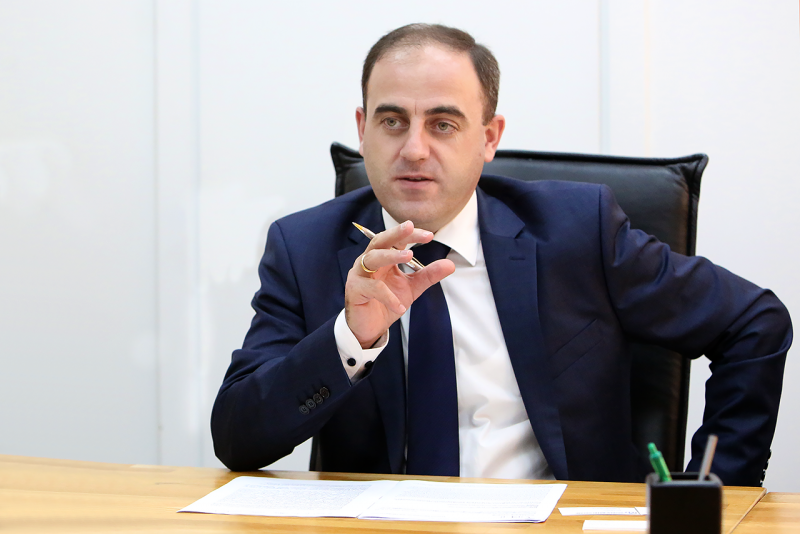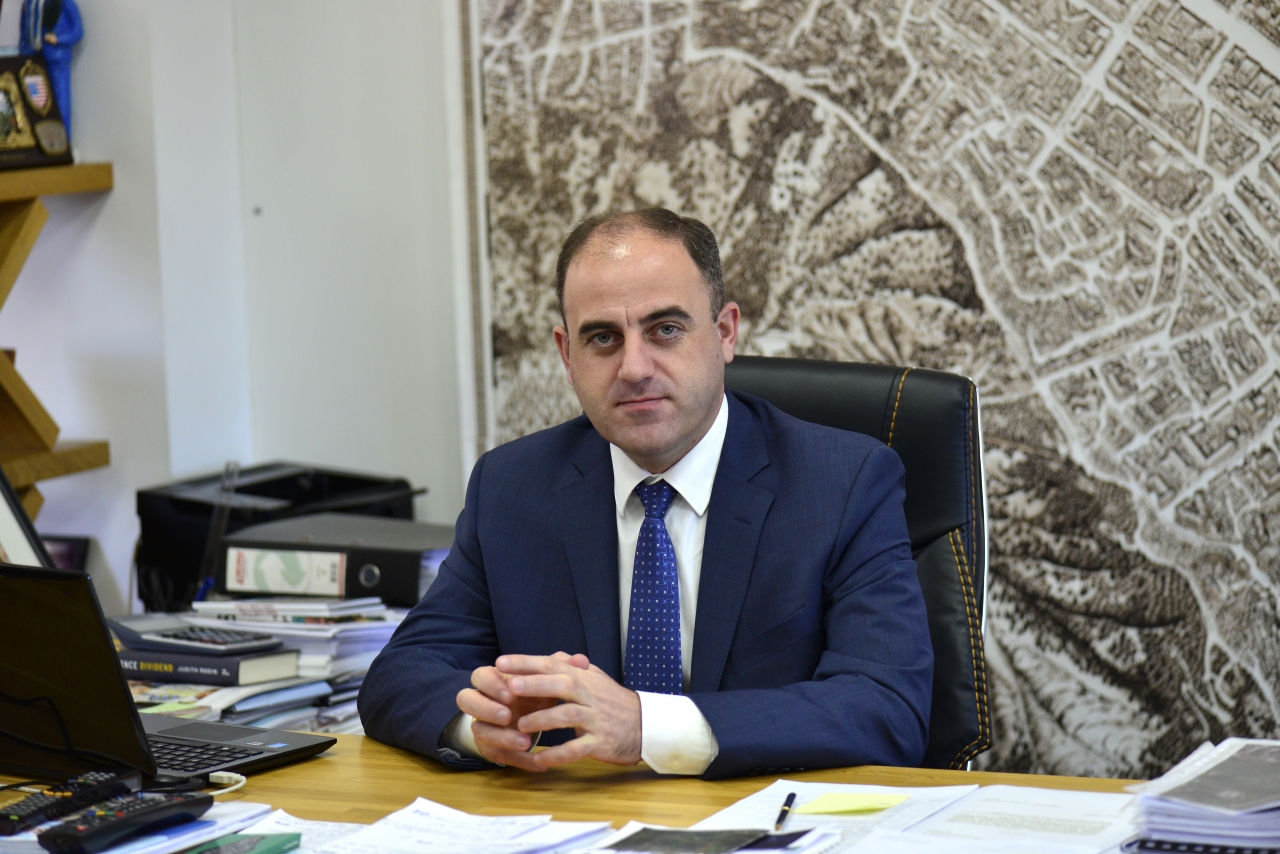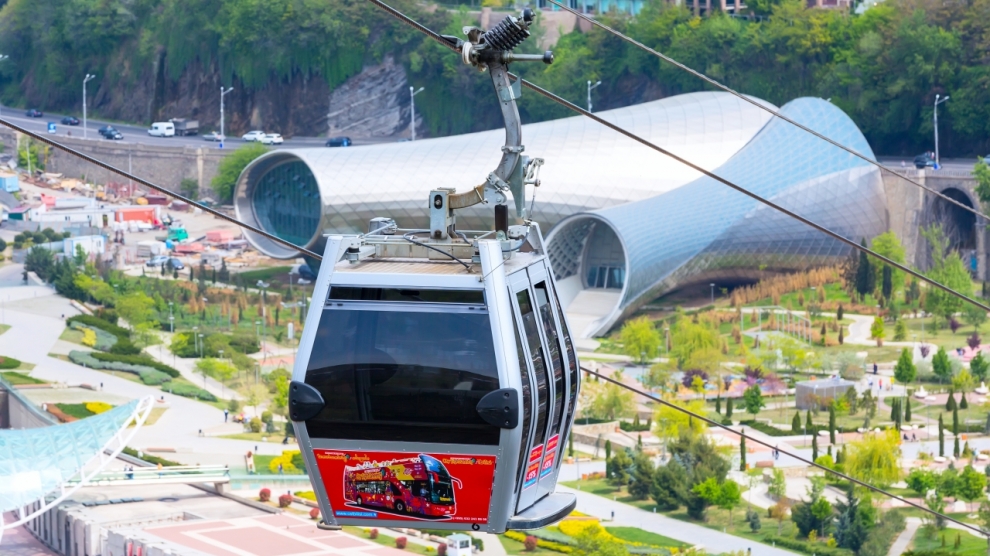Mayor of Tbilisi Davit Narmania talks to Andrew Wrobel about how his city has come on in leaps and bounds during his term in office, and the challenges which still lie ahead.
You’ve been the mayor of Georgia’s capital since the summer of 2014. How has Tbilisi changed during this time?
Tbilisi is becoming a more and more popular tourist destination. It is a safe, attractive and vibrant city. A wide range of projects in the historical district of Tbilisi have concentrated on the preservation of our cultural heritage and landmarks, making the city even more attractive.
To stimulate businesses, tax rates were lowered across the country and administrative procedures were simplified. Those measures were taken to encourage a business sector and attract foreign direct investments. Almost half of all the foreign investments made in Georgia come to Tbilisi. Construction, tourism and hospitality are the key sectors with noticeable growth. All these factors have made the city a regional economic centre as well as a cultural and tourist hub.

How many businesses operate in the city now? And how many small and medium firms are there?
By 2016 the number of registered businesses in Tbilisi was estimated at 260,000, of which around 48,500 are active. There are 48,000 SMEs operating in the city. Between 2014 and 2016 the number of registered enterprises increased by 9.1 per cent, and the number of operating businesses rose by 31.6 per cent. This means that the startup survival rate has increased over the past few years.
Who are the biggest foreign investors in Tbilisi?
Right now, it is the Hualing Group, from China. It’s been very active in Tbilisi for the past five years. They mainly invest in the tourism industry and in construction. They have built residential buildings and shopping malls.
It is clear that the hospitality sector has enormous potential in Georgia and in Tbilisi. How do you see the future of tourism in Tbilisi?
The number of tourists is increasing every year. There is an increased demand for hotels, restaurants and bars. New flights to the city have been added from various destinations and nowadays Tbilisi receives flights from up to 40 cities. It should be noted that a new airport terminal has recently been opened to meet the increased number of passengers. I hope that we will soon have direct flights to more destinations, for example, Tbilisi –Berlin, or Tbilisi– Brussels. There are no direct flights to either city at the moment. Another challenge is that most flights arrive at night, and it is very inconvenient for our passengers.
The most beautiful part of the city is the old town. In order to attract more visitors, renovation-rehabilitation works that aim to preserve our cultural heritage and restore the buildings to their former glory are underway. Recently, the parliament of Georgia adopted legislation that bans smoking in public spaces. We are trying to make the city more smoke-free and more tourist friendly.
I think that there is an opportunity for Tbilisi to become a venue for regional and international conferences, forums and various cultural or sports events.
What else needs to be done to attract more tourists and business visitors to Tbilisi and Georgia?
According to the Georgia Tourism Strategy, 11 million visitors are expected to arrive annually in the country by 2025. The majority will be guests of the capital. In this regard, Tbilisi is sparing no effort to be ready to meet the increased number of tourists. Our plans include the improvement of tourism infrastructure, development of more pedestrian streets, making public transport accessible for tourists, launching a new Tbilisi travel and tourism website and installing tourist signs. Training sessions will be held for staff involved in the tourism industry with a view to improving delivery of services. We often visit target markets and promote the tourism potential of the city. I think that these measures will significantly promote Tbilisi as a popular travel destination.
Tel me how the quality of life in Tbilisi has improved?
There has been an increase in average income. There are far more services being delivered to citizens than before, and of a better standard: improved public transport, new and renovated kindergartens, an increase in the number of parks and green spaces, and construction of new municipal infrastructure.

What are the biggest challenges for you as mayor and for the next mayor?
Traffic. The problem stems from the huge increase in the number of cars in the city over the past few years. The number of cars has doubled, from 200,000 to 400,000, since 2010. To relieve traffic congestion, the central government of Georgia introduced a bill to make a technical inspection of cars compulsory. Drivers are now required to have the mechanical condition of their cars inspected, otherwise, they will be fined. At a municipality level, we are developing new roads and infrastructure to lessen the traffic in the city. And most importantly, we are improving public transport to make it an attractive alternative to private cars.
I would also like to mention that we are upgrading the existing bus fleet in the city with the support of the EBRD and E5P (Eastern Europe Energy Efficiency and Environment Partnership). We have recently opened the 23rd metro station, and the metro system now has a total length of 60km. The extension of the metro network was funded by the Asian Development Bank.


Add Comment